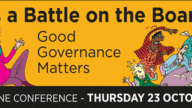Management & leadership, Governance, Marketing, Policy, campaigns & research
What’s in a Name? The Origins of the Directory of Social Change
From September to March, DSC is marking over 50 years of making charities stronger, please join us in the celebrations.
The founding idea of the Directory of Social Change was simple: to provide people with the tools to change society. In the UK, that didn’t mean heading into the wilderness to build a log cabin, but setting up a free school, a credit union, or a housing project. The aim was to give people ideas, information, examples and contacts so that they could go out and create social change.
After a four-month road trip to the USA in 1975, I set about making the idea real. My first step was to find a publisher. Wildwood House immediately said “yes”. My next step was to ask Community Service Volunteers to provide me with two full-time volunteers for a year. They also said “yes”! Together we produced the first two volumes – Education & Play and Community – which were published in 1977. These Directories were packed with ideas, information and contacts for anyone wanting to build better communities and a better world. Two further volumes on Women and Housing followed, before Wildwood House sadly ceased trading.
While this was happening, I met Hilary, who had written one of the first books on fundraising. At the time there was practically no information available and nobody offering training. Together we decided to organise four one-day seminars – on Trusts, Government, Companies and Special Events. We found speakers, produced a leaflet, and sent it out via NCVO. The response was overwhelming: all four events were fully booked.
I searched for books to sell at these seminars but found almost nothing beyond a short NCVO list and CAF’s expensive Directory of Grant-Making Trusts. So I transcribed and edited the seminars myself and published them as loose-leaf packs. Our next seminars on Campaigning and Lobbying followed the same pattern. Soon I realised these folders could be turned into books – and by selling copies in advance I could cover the production costs.
And so DSC began in both publishing and training. From those early days it grew into a major force in supporting the voluntary sector, working first from home and then through offices in London and Liverpool. The Directory of Social Change became – and remains – a vital source of knowledge, training and inspiration for those working to create a better society.
Final Notes
Looking back, a few things stand out to me:
A pivot in focus – From publishing Directories to developing training and resources for charities, DSC grew by going with the flow of what people needed most.
Self-sufficiency – I embraced the idea of social enterprise. DSC generated a surplus every year, which we reinvested in research and development.
Moving on – After nearly 20 years, I felt change came more from individuals with ideas than organisations. So in 1995 I left to start the Centre for Innovation in Voluntary Action.
Returning to the original idea – In 2005, I wrote 365 Ways to Change the World, another attempt to compile knowledge as a tool for action.
Hilary’s legacy – My wife Hilary went on to found the Charities Advisory Trust, creating Good Gifts, running the Green Hotel in India, and launching the Knit for Peace programme.
The Directory of Social Change began as an experiment in gathering and sharing knowledge. It became an organisation that has helped thousands of charities to thrive – and its spirit of practical action for a better world continues today.



